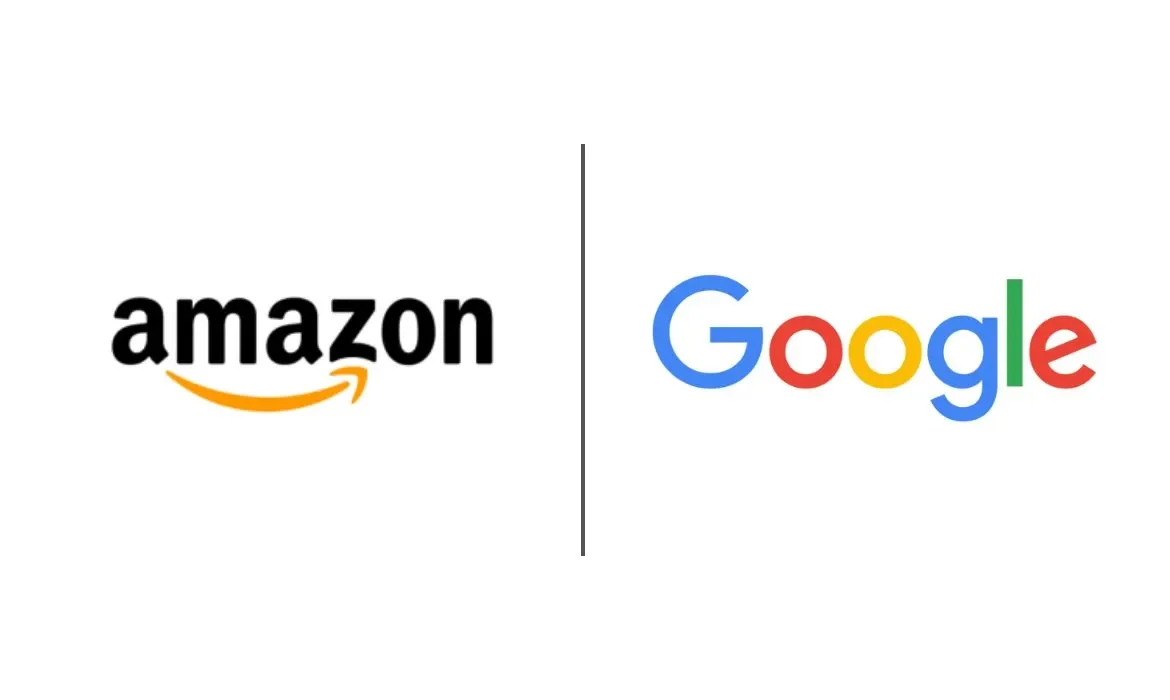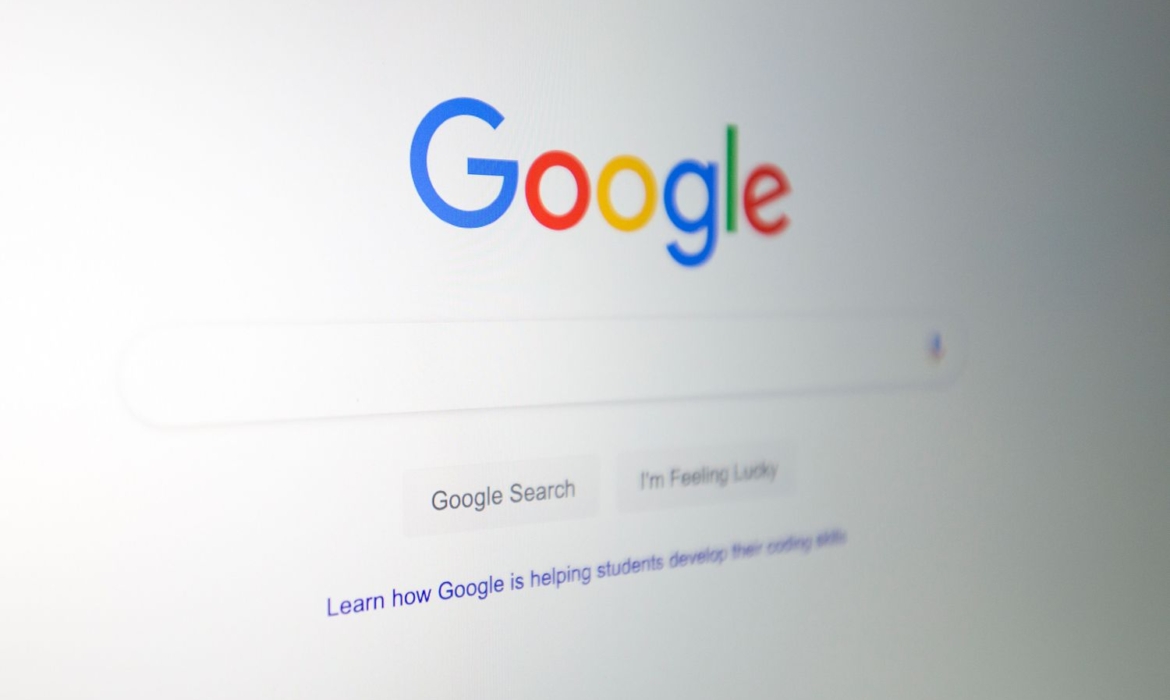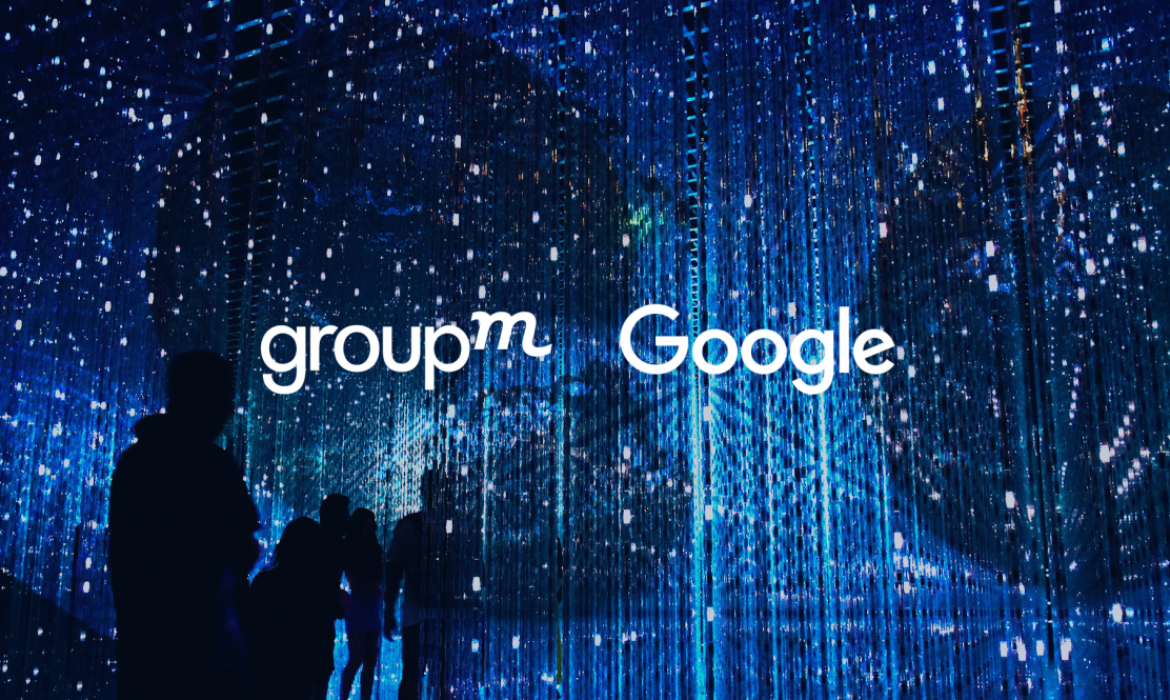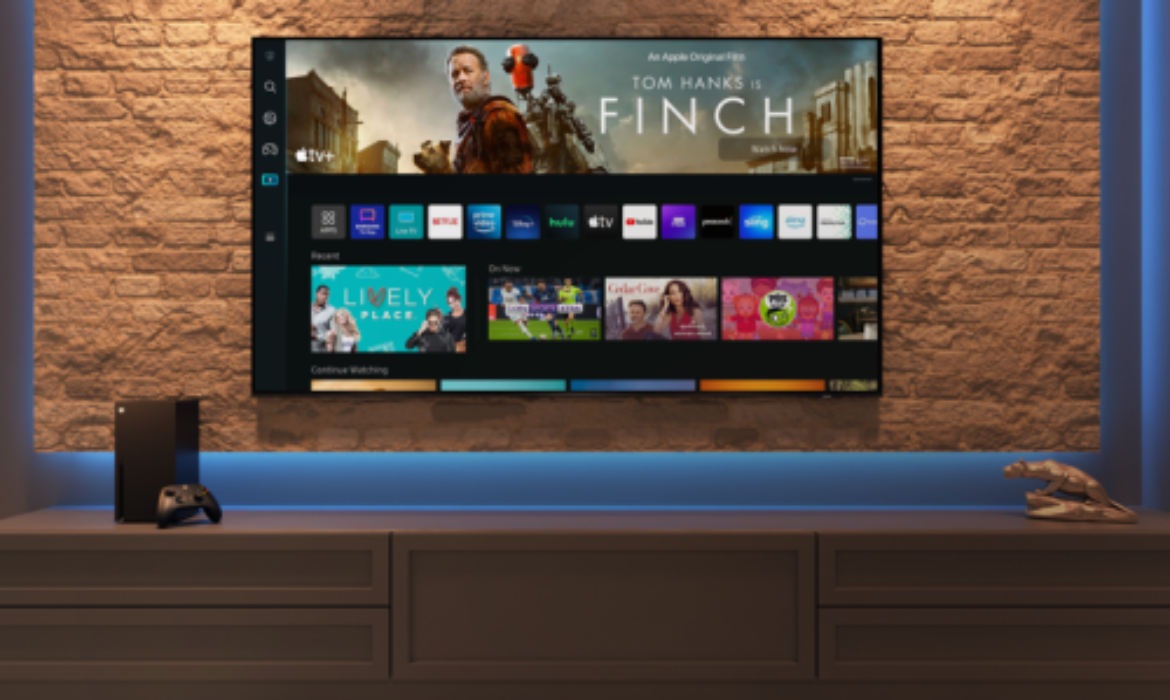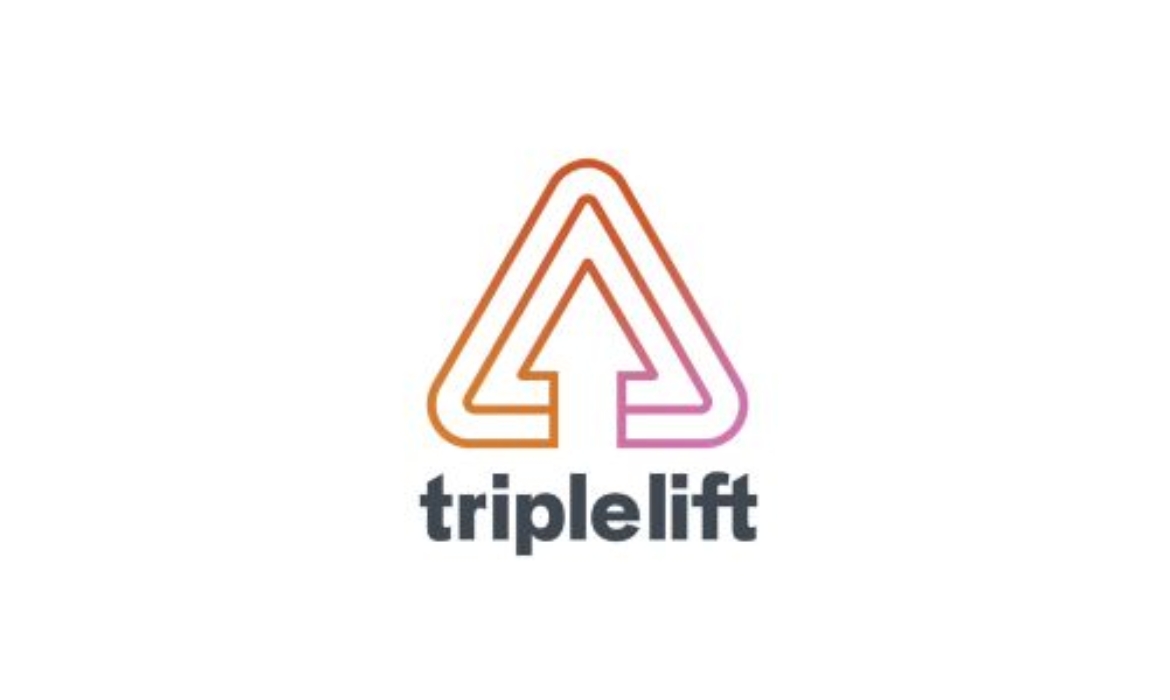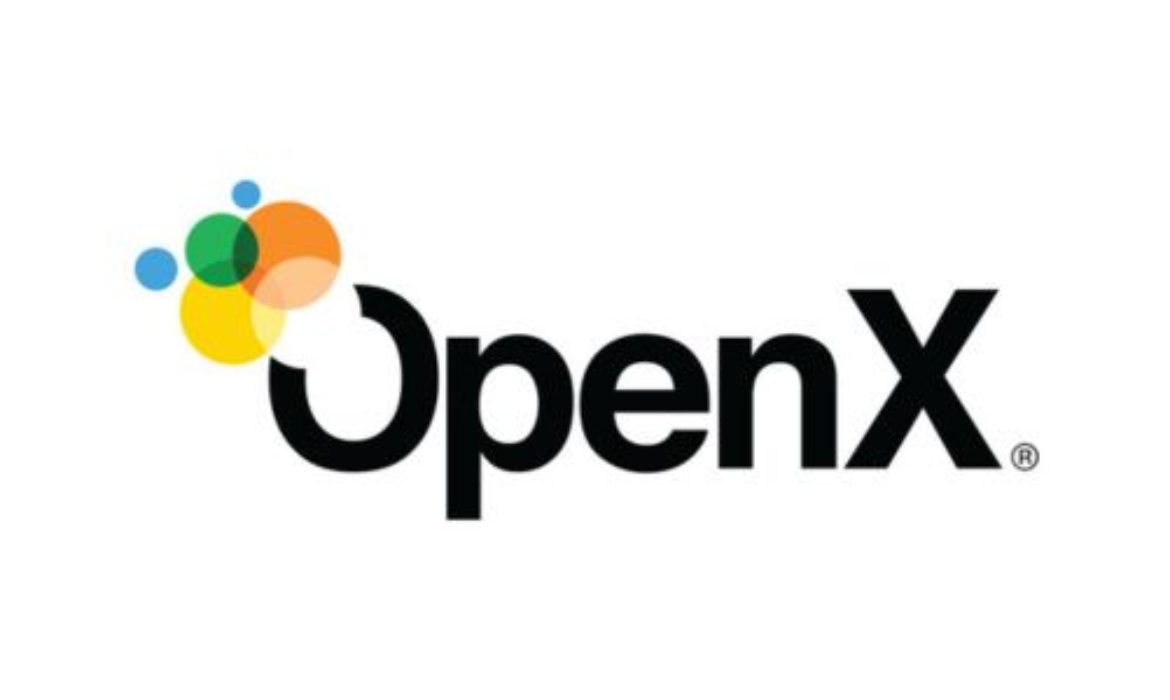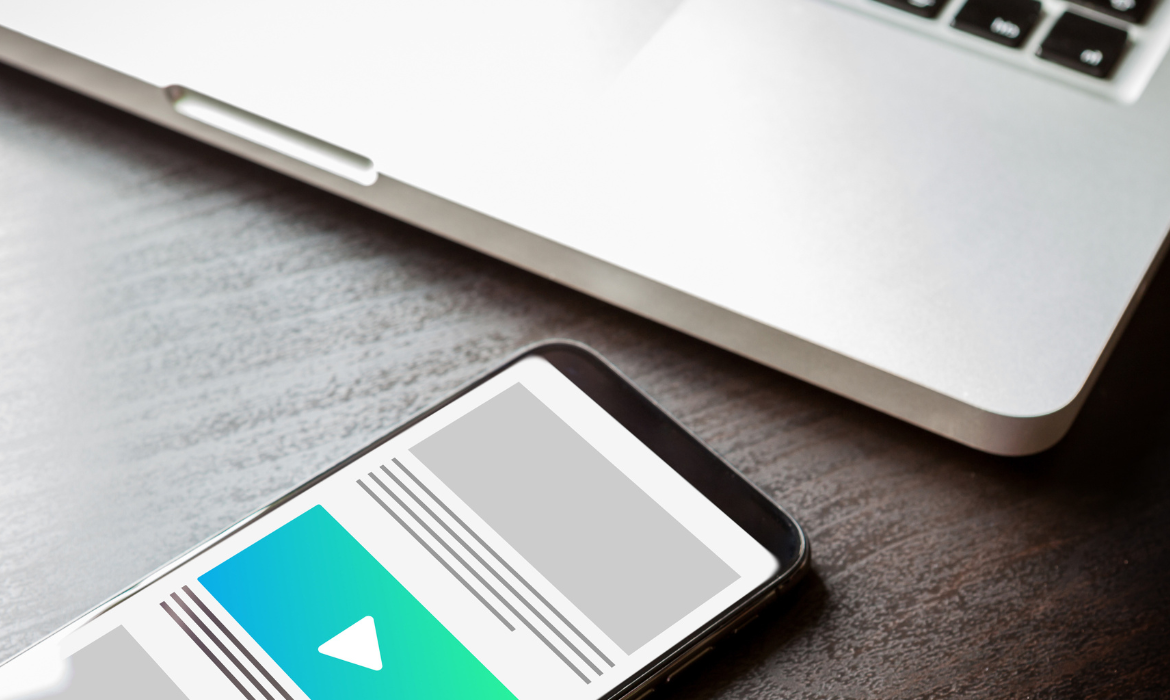Amazon and Reach Partner for Targeted Ads Ahead of Third-Party Cookie Phase-Out
Amazon has signed a historic contract with Reach, the UK’s largest publisher, to access customer data for targeted advertising. The collaboration occurs as the media landscape struggles to respond to Google’s move to remove tracking cookies from its browser. Reach will share “contextual” first-party data with Amazon under the terms of the agreement, including details about the articles users are viewing. Amazon will then make use of this information to improve targeted ads on the websites of U.K. publishers, giving advertisers more effective and relevant advertising options.
The agreement benefits in ad data for targeted ads
The agreement is a reaction to Google’s plans to phase out third-party cookies later this year. It is among the first of its kind in Europe. Google plans to turn off all third-party cookies by the end of the year, matching Apple’s similar action to prohibit them in Safari. Its goal is to compensate for the disappearance of cookies, which monitor users’ online activities and gather data about them to better target advertisements. However, the agreement’s financial details were kept secret. Reach announced that it would collaborate with Amazon to share first-party data that is “contextual,” such as what articles users are viewing, with the American tech company utilizing the data to offer more specialized advertising on the U.K. publisher’s sites.
Beyond third-party cookies for targeted ads
This deal inspires other ways to reach high-value consumers online as advertisers look beyond third-party cookies for targeted advertising. To make sure that advertisements appear next to content that users are interested in, Reach intends to make use of Mantis. It is a brand safety and contextual advertising tool for publishers. By working together, Amazon can more effectively target audiences with relevant advertising in Reach’s magazines, including the Mirror, Daily Star, and OK! Magazine.
Read More: Amazon Prime Video Estimated to Generate $1B From Ad-Supported Tier in Debut Year
U.K.’s CMA raises safety concerns
While Reach and Amazon were announcing their partnership, the U.K. Competition and Market Authority (CMA) sent out a statement stating Google cannot move forward with third-party deprecation. The CMA raised issues that might cause Google’s third-party cookies phase-out to be delayed. In its most recent report on Google’s Privacy Sandbox, the tech giant was found to have complied with commitments. However, there are still several issues that need to be resolved before third-party cookies are removed from Chrome. If Google doesn’t take further action to address the concerns expressed about the proposed changes to the Privacy Sandbox, it won’t be able to remove third-party cookies from Chrome in the second half of 2024, as it is currently scheduled, at least not in the U.K.
Demands laid out by CMA
Before the removal of third-party cookies, the CMA laid out several demands for Google. However, the regulator stated that this does not preclude Google from moving forward with its plans. In a report outlining its ongoing concerns about Google’s Privacy Sandbox:
- The CMA states that Google might keep profiting from user activity data while preventing rivals from accessing the same information.
- Google’s ad tech services may benefit from its ability to manage which of its competitors’ ad tech companies are listed here.
- It is possible that publishers and advertisers won’t be as good at spotting fraud.
The CMA is collaborating with Google to find solutions to these problems. By the end of April, it will provide an update on each engine’s development in its upcoming quarterly report.
Accessing customer data for targeted ads
Other media companies are also considering deals involving customer data. A growing number of publishers are experimenting with paywalls and registration pages. However, it requires users to provide first-party information, like email addresses and login credentials. Reach is already working to collect additional reader data of this kind.
Read More: Google’s Third-Party Cookies Deprecation Rolls Out Today
Google’s Third-Party Cookies Deprecation Rolls Out Today
Cookies are the currency of the world of digital advertising. At least that’s how they were once. Now is the time to get ready to phase out third-party cookies and begin using cookie-less strategies. Making the switch to contextual advertising will now require getting ready for a world without cookies.
Beginning today, January 4, Google intends to remove third-party cookies from its Chrome browser by the end of 2024. With 1% of cookies impacted, the tech giant has planned a gradual phase-out that will begin today and give marketers time to adjust before the full removal by the end of the year. Publishers’ and advertisers’ interactions will undoubtedly change significantly as a result of the gradual removal of cookies. It represents a significant policy shift and a move towards privacy-focused transactions.
Google’s third-party cookies phase-out plans
As part of a pilot program, Google will begin gradually phasing out cookies for 1% of Chrome users starting today. To prepare for the big show, Google’s masterminds will observe, evaluate, test, and reorganize. Understanding the nature of the cookie-less environment and its practical implications will be greatly aided by this small-scale deprecation. Although Google did not immediately disclose the precise number of cookies for the impacted internet users, it is possible that up to 30 million cookies are in place. Despite being gradual and phased out, the phaseout would be finished by this year’s second half, most likely in Q3 2024. If regulations allow, Google intends to remove third-party cookies for all Chrome users.
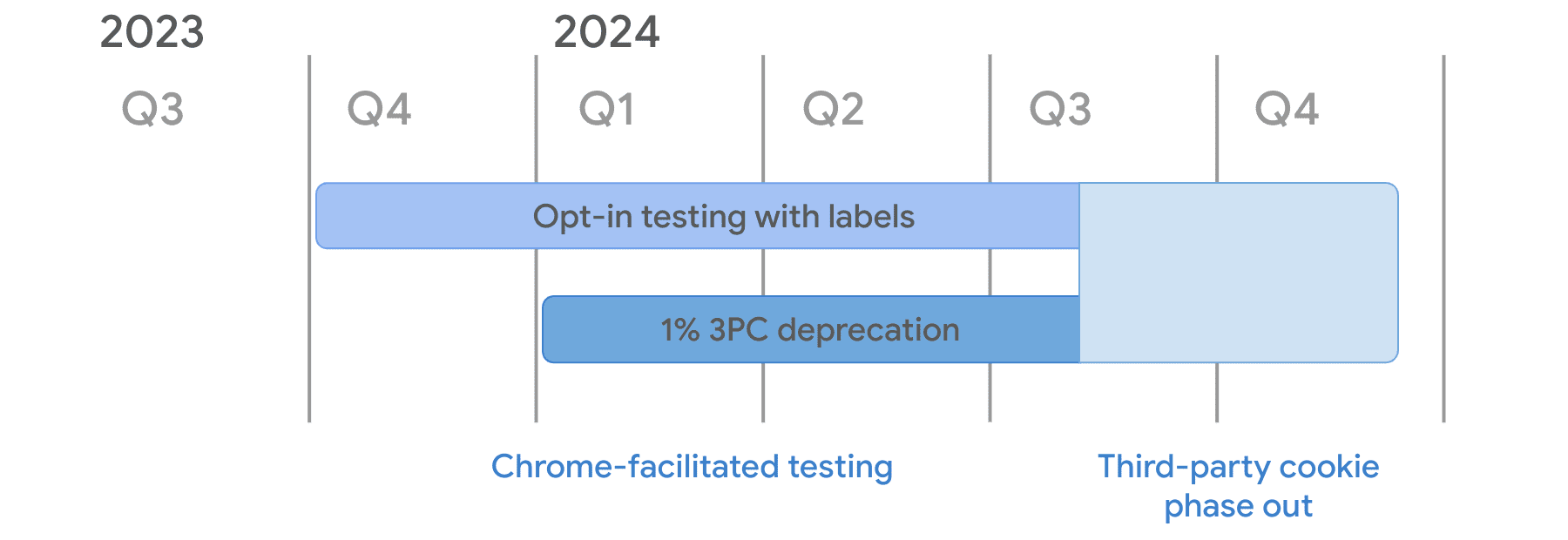
Image credit- Google
A major shift in the advertising world
Google wanted to allow publishers and advertisers ample time to get ready. Thus, the delayed launch. This will compel significant adjustments to the way digital advertising functions. Some worry that it might force websites to use more obscure tracking methods. Given how heavily the digital advertising sector depends on third-party cookie tracking, the news is probably going to cause controversy. Certain ad tech companies may lose their present capacity to gather data. Rather than being genuinely excited, the advertising industry’s anticipation can best be described as cautious skepticism. It is independent of the segment of the advertising business, be it browsers or ad tech providers.
Origin of third-party cookies
Originally, the goal of third-party cookies was to provide website users with more specialized advertisements. Rather, they evolved into something that was frequently centered on obsolete consumer behavior. To generate behavioral profiles, cookies were combined. Because of retargeting and open conversion loops, website users would still see ads for items they had previously browsed six months ago.
Read More: Google’s Phasing Out of Third-Party Cookies: A Paradigm Shift in Digital Advertising
How does the advertising world perceive this?
At the moment, the Privacy Sandbox is not a problem for any ad tech providers. Some vendors may view the partnership with Sandbox as a calculated move to remain relevant and competitive in light of Google’s strong market position. This decision was made easier by the testing grants Google is providing. That being said, some businesses aren’t as welcoming. They are unwilling to support the Sandbox as long as they believe it will further reinforce Google’s supremacy over the advertising industry.
With this first rollout, advertisers, publishers, and creators should take advantage of the chance to test and modify their strategies to effectively adjust to this change. Although the digital advertising industry has had nearly four years to plan, it is now necessary to develop flexible and adaptive approaches to determine what works and what doesn’t.
Important Alternatives to Cookies
It’s safe to say that there are a lot of interesting and complicated third-party cookie alternatives available. Shifts on this scale leave alternative identities in a constant state of change. They face difficulties with privacy compliance, interoperability, and measurement and targeting efficacy. Even the front-runners struggle with personal issues.
First-party cookies
To get ready for a world without cookies, advertisers need to gradually wean themselves off third-party data. To address this, first-party data-based solutions must be adopted, enabling advertisers to use their own, consenting user data for targeting. Instead of cookies, publishers and advertisers are experimenting with several first-party data-based solutions.
In the world of digital advertising, first-party cookies are a tactical turning point. Because they are site-specific, these cookies are ideal for meeting the requirements and preferences of different publishers and websites. Everything is connected to Google’s Privacy Sandbox program. The main focus of this large-scale project is privacy compliance. It seeks to satisfy cross-site use cases without using third-party cookies or other tracking mechanisms while balancing the needs of digital advertising with the privacy of individuals.

Image credit- Campaign Asia
Hashed emails
User email addresses are necessary for a hashed email solution to work. A user provides a wealth of identity and online behavioral data when they log in with their email address. This crucial information, which is now hidden by an encrypted identifier can be shared further up the chain with media buyers for more precise targeting. It can be pushed through a hashed email API and ensures that user data is fully secure. Ad tech companies first proposed hashed emails as a substitute for third-party cookies.
Read More: Yahoo Partners with VIOOH for prDOOH and Twilio for First-Party Ad Reach
Contextual data
One more of these alternative methods for third-party cookies is to use contextual data, which provides perspective about an online user rather than presumptive behavior. Contextual data assists advertisers in making decisions based on the content a user is currently consuming rather than previous behavior in this way. In addition to being frequently more effective, contextual data is also less expensive to obtain than third-party data. Generally speaking, contextual ad impressions are less expensive than behavioral ones. Given that the targeting is based on context and recency rather than legacy behavior, it can also aid in providing a better user experience.
APIs
Google is testing APIs. These include the “first locally executed decisions over groups experiment” (FLEDGE) and the Topics API, which have taken the place of the Privacy Sandbox’s initial federated learning of cohorts (FLoC) proposal. After analyzing a user’s three weeks of content consumption in an anonymous manner, Topics creates five “Topics” every week, one of which is sent in response to an ad request. The FLEDGE API auctions don’t rely on following users around websites because they operate directly within Chrome.
Retail Media Networks
Another cookie-less option that has emerged is retail media networks. Through these platforms, advertisers can reach more niche audiences and gain access to first-party data, including loyalty and point-of-sale data. By expanding the scope of this first-party data outside of the retailer’s owned and operated properties, RMNs assist advertisers in reaching in-market consumers without the need for cookies.
Chartering the course in the future.
The ad tech industry has entered uncharted territory with Google’s third-party deprecation. Everyone is wondering what the world will look like when the last third-party cookie disappears. There’s no denying that this ushers in a new era of digital advertising where privacy is crucial. Publishers will need to adjust to first-party cookies and other practices like hashed emails, and advertisers will move toward more content-based and contextual approaches.
Businesses of all sizes will need to be inventive and flexible to succeed in this new era. This entails making investments in fresh platforms and technologies that can adapt to the change and create new opportunities for efficient audience targeting without compromising user privacy. It’s not all bad news, though. A plethora of prospects lie ahead of us. Recall that in the cookie-less future, flexibility is essential.
Read More: GroupM and Google Announce Post Third-Party Cookie Readiness Program
Google Plans to Phase-Out Chrome Third Party Cookies On January 4, 2024
Google revealed that, as part of a plan to phase out third-party cookies, which marketers use to track users, it will start testing a new feature on its Chrome browser. From January 4th, the tech giant will begin its much-awaited purging of the internet’s cookies. It will block them for 1% of Chrome users, or roughly 30 million people. Users will notice a small eyeball logo in the URL bar when Tracking Protection is enabled. In the event of disruption, they will be prompted to deactivate Tracking Protection for particular websites. They will also be given the option to disable it altogether. This marks a significant milestone in Google’s Privacy Sandbox project. The initiative seeks to replace cookies with what it claims is a more effective form of tracking for efficient user privacy.
Google finally intends to phase out third-party cookies
In the second half of 2024, Google intends to fully phase out the use of third-party cookies for users. This marks a significant first step in Google’s Privacy Sandbox Initiative. It aims to replace cookies with an alternative tracking mechanism called “Tracking Protection,” which Google assets in a more privacy-oriented manner. The initiative comes nearly four years after third-party cookies were disabled in Firefox and Safari.
However, the timeline is contingent upon resolving antitrust issues brought forth by the Competition and Markets Authority (CMA) of the United Kingdom. In addition to keeping an eye on the company’s largest revenue stream, advertising, the CMA has been looking into Google’s proposal to stop supporting some cookies in Chrome. This is because the watchdog is concerned it will hinder competition in the digital advertising space.
Read More: Google’s Phasing Out of Third-Party Cookies: A Paradigm Shift in Digital Advertising
How were third-party cookies beneficial to advertisers?
Cookies are unique files that let websites and advertisers track a user’s browsing behavior and identify them individually. Advertisers claim that the removal of cookies from the most widely used browsers in the world will restrict their capacity to gather data for customized advertisements and force them to rely more on Google’s user databases. Online organizations have used third-party cookies as their main method of tracking users’ activities for decades. These cookies give websites the ability to work with different businesses, like Google, to track users’ online activities. A significant change in digital tracking tactics is reflected in the impending demise of third-party cookies.
So-called “third-party cookies” have been the main method used by websites and tech companies to track users online for the past 30 years. For example, after a user has added shoes to their cart, they will see online advertisements for those shoes over time. Third-party cookies come into play here. These cookies enable websites to collaborate with numerous businesses, such as Google, to monitor user activity on the internet. Although it is fantastic for businesses, the fact that so many companies can retain user browsing history is terrible for user privacy.
Privacy Sandbox Initiative
Google stated that users can use the symbol to the right of the address bar to temporarily turn cookies back on for 90 days if necessary. It is incase if the website isn’t functioning properly without third-party cookies. If Chrome detects any problems with a website through indicators like repeated page refreshes, it will prompt the marketer to take this action. Chrome continues to track users, and it does so in a manner different from that of Firefox and Safari. However, the majority of users don’t bother switching browsers, and Google’s brand-new Chrome version is at least better for privacy as it discloses less information about the user’s online activities. As part of the Privacy Sandbox Initiative, Chrome users can choose to enable or disable cookie replacements. If users find the idea objectionable, they can still disable these tools through their browser’s settings.
Read More: End Of Third-Party Cookies, What Is There For Marketers: Takeaway!
Optional Tool to disable cookies
Google has added a new set of tools to the Chrome browser. These tools allow it to track users’ online activities in place of third-party cookies. Using this new strategy, users’ data is preserved on their devices by grouping them into discrete “Ad Topics.” Websites can request a user’s classified group but will not obtain personal data. This is different from traditional cookie-based tracking techniques. Websites can ask Google which categories users fall into. However, they will not be able to identify users precisely (at least not with cookies).
A strategic move aligning with rising user privacy concerns
Google’s strategic action is in line with an industry-wide trend toward enhancing user privacy. It is a result of increased regulatory scrutiny and consumer demand for stricter protection against unwanted data tracking and profiling. There will be some bugs because this is a significant alteration to the way the internet functions. Cookies are used for much more than just spying. They also store information about user logins, what they have in their carts, and many other useful features. Despite Google’s efforts to identify and remove malicious cookies, there will always be early failures
Read More: GroupM and Google Announce Post Third-Party Cookie Readiness Program
GroupM and Google Announce Post Third-Party Cookie Readiness Program
In collaboration with Google Chrome, GroupM, WPP’s media investment group, announced the opening of the world’s largest post-cookie technology readiness program. GroupM clients come together as part of this global initiative to gain a faster understanding of Google Privacy Sandbox APIs and how they are used in advertising. Clients who are willing to participate will have access to the learning program, which will enable them to evaluate and enhance their preparedness for third-party cookie deprecation in a practical setting with their own audiences and products. The collaboration’s goal is to eventually replace Chrome’s current reliance on third-party cookies.
Readiness Program for post-third-party cookies
In collaboration with Google Chrome, GroupM has introduced the first global post-cookie technology readiness initiative. To assist with technical troubleshooting, clients will be able to anonymously share test results. Additionally, as the test progresses, Google representatives will provide resources and direct feedback to GroupM clients. For the time being, they will only be offering this to GroupM. GroupM intends to utilize its global reach as the top media-buying agency to perform a meta-analysis of individual brand tests. The data will be anonymized and aggregated to facilitate learning and ultimately produce a meta-study.
Additionally, GroupM’s ad-tech partners’ solutions will be tested on the market first for participating advertisers. In a post-cookie world, the program is supposed to educate clients on targeting, optimization, and measurement of digital investments in display and video. Participating brands may share their thoughts on Privacy Sandbox features and utilize their current media plans and budgets without having to make any additional financial commitments.
Read More: GroupM and Amazon Ads Partner for Creator-Led Shoppable Format
Characteristics of the program
Unified Guidelines: GroupM is developing a unified testing framework based on the post-cookie testing guidelines provided by the UK’s Competition and Markets Authority (CMA). GroupM will collaborate with ad tech partners and advertisers to comprehend their plans for integrating privacy technologies. These will include Privacy Sandbox APIs and will overlay pertinent tests when feasible.
Anonymous Data: In addition to the brand’s own Privacy Sandbox program, GroupM will perform an anonymized meta-analysis across individual brand tests in order to maximize the learning potential for each participating advertiser. As part of group learning and ultimately a meta-study, this data will be aggregated and anonymized.
Enhanced Learning: With global ad tech partners, participating advertisers will have direct access to testing across GroupM alpha and beta. Participating clients will gain access to GroupM’s collective knowledge. Additionally, they will learn at the forefront of this industry-altering change as first-to-market testers.
What’s in it for advertisers?
This program offers advertisers the chance to prepare for the eventual deprecation of third-party cookies. It paves the way for brands to target, optimize, and measure without them. One of the many ways GroupM will assist clients in modifying their marketing strategies to stay relevant and successful in a post-cookie world is through this program.
Read More: Google Release Updated Ad Review Centre for its Ad Platforms
Google’s third-party cookies phaseout
Subject to resolving any competition concerns with the CMA, Google confirmed its plans to start deprecating third-party cookies in Chrome in H2 2024. It is doing so in an effort to better protect people’s online privacy. With GroupM and Google launching a post-cookie readiness program, it appears that the era of long-standing tracking and targeting technology is drawing to an end.
GroupM – Google Chrome partnership
GroupM will be in a better position to assist its clients in developing digital strategies that make use of Privacy Sandbox technologies. This is thanks to its partnership with Google Chrome. Learnings will be made available to GroupM. Moreover, participating clients prior to the scheduled deprecation date of third-party cookies in Chrome. Along with important ad tech partners, they can also offer input on Privacy Sandbox features. They can further assist in defining new internet privacy regulations that allow online content creators and publishers to maintain free content. Through the use of current media plans and budgets, the Privacy Sandbox program optimizes current campaigns. It does so in a way that is both future-proof and privacy-centric without requiring additional funding.
Here’s what they said
Christian Juhl, GroupM’s Global CEO said
We strongly believe advertising can and should respect people’s privacy while continuing to deliver exceptional value for consumers and advertisers. Since Google publicly declared their intention to deprecate third-party cookies, we’ve been collaborating closely with the Chrome team, our clients, and other partners to ensure our clients won’t miss a beat when the transition happens. The program we’re announcing today is an exciting step forward in that collaboration that will allow our clients to test existing preparations and enable us to develop new approaches where necessary.
Anthony Chavez, Vice President, Privacy Sandbox, Google added,
This program is a key step in our ongoing efforts to ready the industry for the transition to the post-cookie era. GroupM is well equipped to help advertisers with their third-party cookie deprecation preparation efforts. Along with their ad tech providers, this initiative will help GroupM’s clients as they work to integrate the capabilities that the Privacy Sandbox provides. Through this readiness program, GroupM and its clients will play an important role in helping to create a more private internet for everyone.
Read More: Verizon Media Rolls Out Connect ID To Replace Third-Party Cookies
Novatiq Announces Partnership with DMS for Data-Driven Ad Campaigns
Novatiq, a telco-based identity platform, has teamed up with Choueiri Group’s digital division, Digital Media Services (DMS). The group serves as the exclusive media liaison for more than 25 Arabic and foreign publishers. Through the partnership, brands can access data-driven, privacy-focused advertising campaigns.
Data-Driven Campaigns
By improving the relevancy of its clients’ ads across its websites, DMS is able to provide more value to them through Novatiq’s Fusion platform. Highly relevant advertisements will be shown to readers, improving the user experience. The announcement comes at a perfect moment as companies around the world struggle to adapt to third-party cookies being phased out by regulators, which makes marketing much more challenging. Novatiq’s technology eliminates this issue because it doesn’t rely on cookies or persistent customer IDs. The platform uses addressable advertising based on customer insight by utilizing telco customer intelligence. The solution gives DMS’s clients a fresh approach to identify, comprehend, and engage audiences in a privacy-first world where conventional advertising models are no longer appropriate.
Telco-based ID solutions
The telco-based ID solution combines media activation, audience recognition, and verifiable first-party data to enable addressable advertising at a new scale with industry-leading accuracy. Novatiq wants to lead the way in first-party privacy standards. Customers can always revoke their consent and control how their personal information is used with the Fusion platform. The platform offers a comprehensive privacy-compliant solution for validated audience creation and activation.
Read More: Samsung Ads Enables First Party-Data For Smart TV Ad Campaigns
Here’s what they said
Jonno Hulford-Funnell, CEO, Novatiq said.
We’re delighted to announce this tie-up with the region’s leading publisher group. We truly believe our solution enables the most private addressable advertising around the globe, for the benefit of publishers, brands, and their consumers. Audience reach and advertising performance results so far speak for themselves. Novatiq brings addressability that works harder for ad campaigns, with automation and efficiency that means no extra effort, while also protecting everyone’s privacy.
Ziad Khammar, COO of DMS, added
Our partnership with Novatiq is another step in our ongoing commitment to support our publishers and help advertisers effectively reach their target audiences. We’re pleased to carry forward our track record of innovation, providing practical solutions that benefit our partners.
Mathieu Yarak, Group Senior Director of Data & Insights at Choueiri Group commented,
This new solution offers a brand-new way of recognising and activating audiences in a privacy-first world where old advertising standards are not fit for purpose. With the demise of third-party data and the inability to activate it, the advent of a telco-based ID solution that couples audience recognition with media activation, and verifiable first-party data, enables addressable advertising with the greatest accuracy and match rates, whilst preserving absolute privacy for consumers, the telcos and publishers. Advertisers suddenly have back the best parts of what has been lost from 3rd party cookies but leave behind the 3rd party cookie and all the problems that came with it.
Read More: WPP and Optimizely Team Up for Data-Driven Digital Experiences
Google Launches Google Ads Data Manager for First-Party Data
Google has created an advertising measurement tool that integrates with first-party data from marketers. It is made to function without browser cookies and other data tools that use antiquated techniques to measure performance. The measurement tool, Google Ads Data Manager, will be made accessible in Google Ads from the beginning of 2024. As the business continues to simplify the administration and use of first-party data, the product plan calls for expanding it to additional Google platforms. The tool will make it easier to connect to and utilize first-party data. It centralizes all data management controls, allowing for more income and improved business outcomes.
Google Ads Data Manager for Advertisers
Less than one-third of marketers, according to Google, consistently and successfully access and integrate first-party data across channels. This issue is resolved by Google Ads Data Manager, which streamlines the administration of first-party data connections and the procedure for utilizing that data for commercial purposes. As the advertising business enters the new year and Google deprecates third-party cookies, advertisers will gain knowledge about integrating data sources and protecting consumer data privacy. When it launches, it will make it easier to enable improved conversions for leads and Customer Match from many partners while still maintaining the essential functionality of each service.
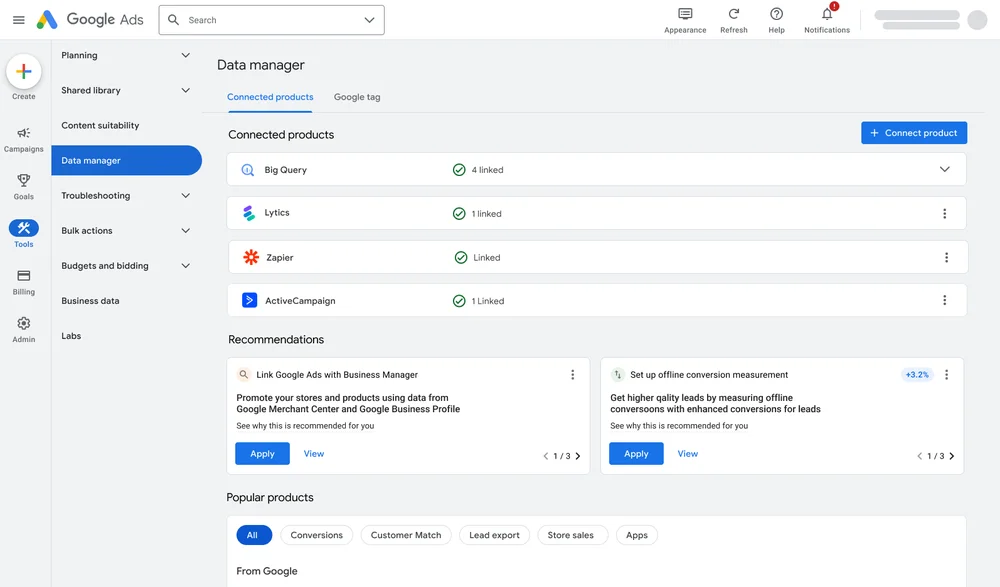
Image credit- Google
Read More: Google Opens Automatically Created Assets Publicly to Boost Efficiency
A number of data sources, such as customer relationship management (CRM) and customer data platforms (CDPs), will be able to be connected by advertisers. Along with marketing tools like Shopify Audiences, this will also incorporate data sources like ActiveCampaign and Pipedrive. If Google Ads Data Manager is a success, it will be simpler to track client interactions with the Google tag and off-website transactions. Instead of altering how Google’s products function, the platform makes it easier for advertisers to use them. Data utilization in marketing is easier because it requires little to no coding expertise.
Benefits of the first-party data measurement tool
Analysts can build new data links using a single collaborative interface. Additionally, marketers can use discrete data to track conversions to target customers with relevant adverts. Zapier and CDPs, such as Lytics, will also provide data sources through cloud-based data storage solutions. Google wants the platform to give users access to all types of data through a single collaborative interface. This will allow analysts to make new data linkages. Furthermore, it will enable marketers to use discrete data to track conversions or target people with appropriate ads
Read More: Samsung Ads and Epsilon Partner for First-Party Data Advancements
Samsung Ads and Epsilon Partner for First-Party Data Advancements
Samsung Electronics’ advanced advertising division, Samsung Ads, recently announced a partnership with Epsilon, a leading provider of advertising and marketing technology worldwide. The partnership promises to provide brands with cutting-edge TV viewership data, network reach, precise activation, and measurement. Brands can access distinctive audiences produced from transactional and demographic data thanks to the connection. For activation across Samsung’s brand-safe Smart TV, connected TV (CTV), and mobile inventories, it also provides a brand’s own first-party data. Additionally, the collaboration enables businesses to use Epsilon audiences to launch ads across the US Samsung Ads Smart TV Ecosystem.
Samsung Ads and Epsilon’s first-party data integration
As the advertising sector gets ready to function in an age without third-party cookies and identifiers, collaboration will become increasingly crucial. This announcement mostly relies on first-party data. It provides the framework for exact ad targeting and campaign execution. It makes it possible to create unique segments. The relationship with Epsilon is a significant accomplishment for Samsung Ads. To improve precision, the new integration provides a direct one-on-one match. It also does away with the requirement for third-party data or crosswalks utilizing Epsilon segments. It improves productivity, generates cost savings, and streamlines business operations, adding value. With the help of top measurement partners, ads are measured using industry-standard Samsung measurement procedures. They differ according to the goals of the campaign, key performance indicators (KPIs), intended results, and other pertinent variables.
Read More: TripleLift’s First-Party Data Targeting Solutions Shines Sans Cookies
Epsilon database
250 million verified US consumers are included in Epsilon’s consumer database. The volume of consumer data gives businesses the chance to identify and communicate effectively with each customer across channels. Additionally, it gives organizations the ability to monitor the success of their marketing initiatives while ensuring that consumer data is kept safe and secure at all times.
Here’s what they said
Epsilon general manager of data solutions Dennis Self said
Epsilon’s partnership with Samsung Ads provides a seamless experience for marketers who are looking to activate Epsilon’s audiences and their first-party data in CTV environments. Our unique audiences provide marketers with confidence that they’ll reach the right people at the right time with messages that matter, removing barriers to activation while simultaneously creating increased demand for CTV campaigns.
Courtney Howell, head of agency development at Samsung Ads commented,
Samsung Ads’s platform, device ecosystem and media assets, including Samsung TV Plus, are critical to reaching consumers across CTV. Through our direct integration with Epsilon, brands can leverage the Samsung TV universe and engaged audience to make CTV campaigns even more powerful. This partnership represents a milestone for Samsung Ads’ ongoing relationship with Epsilon to give even more brands and agencies the ability to immediately activate against our Smart TV footprint with improved measurement and attribution solutions. Our partnership with Epsilon also means that any brands working with Samsung Ads can expect a faster, more seamless execution, combined with the ability to leverage our leading TV data and scale to power CTV campaigns that drive significant performance.
Read More: Samsung Ads Partners with Brightline To Boost CTV Advertising
TripleLift’s First-Party Data Targeting Solutions Shines Sans Cookies
TripleLift, the ad tech platform boosting digital advertising across all screens made the first-ever large-scale test findings public, demonstrating the effectiveness of its recently announced first-party data targeting solution throughout the web. This includes cookie-restricted settings too. Results reveal that when a third-party cookie was not accessible, the offering significantly improved results for both advertisers and publishers. It also states that first-party data outperforms both cookie and non-cookie buys.
The solution, known as TripleLift Audiences, is especially successful in tackling approximately 50% of the internet that already works without cookies. Furthermore, it forges a new path as the sector gets ready for additional addressability disruptions in 2024. Currently, cookie-free environments account for 47% of all ad requests worldwide. Beginning in January 2024, Google is planning to phase out the use of third-party cookies throughout the whole ecosystem of its Chrome browser. About 90% of the open web will no longer be reachable in this way as a result of this change.
Advertiser Results
The outcome presented in collaboration with a significant international advertiser in consumer electronics demonstrated higher performance for impressions enhanced with publisher first-party data. When compared to impressions without first-party data, but with a combination of third-party cookies and no cross-domain identifiers, the advertiser obtained a 33% reduced cost-per-click. With delivery and analysis of 230 million impressions, the test was carried out on a large scale.
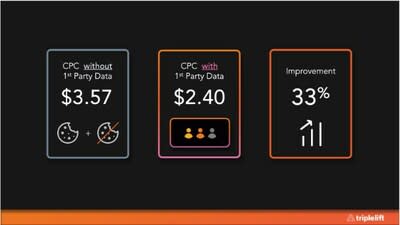
Image credit- TripleLift
How publisher first-party data works
Since TripleLift Audiences’ introduction in June of this year, numerous brands and agencies have conducted sponsored campaigns utilizing its first-party data segments. This method produces curated segments utilizing publishers’ data to identify and reach audiences on their own websites, as opposed to placing cookies on visitors and tracking them throughout the web. With more than 10,000 sites now signed up, this method of quality targeting covers 800 contextual and behavioral audience segments. Furthermore, it also covers 30 billion daily ad impressions without the need for third-party cookies.
Read More: TikTok Expands Measurement Suite with First-Party Solutions
Publisher results
The test showed improvement for publishers as well, with CPMs rising by 26%. Publishers may now re-offer those views through first-party data targeting thanks to TripleLift Audiences. It enables them to monetize content that they were unable to target previously due to third-party cookie deprecation.

Image credit- PRNewswire
Due to two factors, TripleLift has been able to offer this service. First, it used the Zurich-based DMP 1plusX it acquired in 2022. It did so to build the advanced technology, data protection, and privacy requirements needed to develop a workable first-party data segmentation strategy. Second, it used its established, trustworthy connections with publishers to create integrated native ad products. Publishers and advertisers in the U.S. can both use TripleLift Audiences at the moment. In 2024, it will launch in European markets.
Here’s what they said
Ed Dinichert, Chief Revenue Officer at TripleLift said,
We have been discussing the coming cookie-pocalypse as an industry, but often forget that almost half the internet is already unaddressable. This is a boiling the frog moment happening right before our eyes. While many ideas have been proposed, there have never been concrete results showing that any one of them can address deprecation at scale – until now. This solution is effective for advertisers today.
Airey Baringer, VP of Product Management at TripleLift added,
First-party publisher data is underutilized in the programmatic ecosystem. TripleLift Audiences enables easy activation of first-party data to improve targeting on every impression, with or without third-party cookies. The data is superior and outcomes are improved for both publishers and advertisers. This is a win-win for the programmatic ecosystem. Publishers win because they monetize more of their inventory, leading to higher effective CPMs. Advertisers win because they can target more efficiently without third-party cookies, leading to lower CPCs and improved efficiency against all post-click metrics.
Paul Bannister, Chief Strategy Officer at Raptive commented,
TripleLift Audiences has enabled us to drive greater monetization of our inventory, putting more money into the pockets of the 5,000+ creators and publishers we work with – and first-party data is unlocking that opportunity. This presents a big advantage for us and other publishers in the ecosystem, and we’re excited to be at the forefront of testing these new cookie alternatives.
About TripleLift
TripleLift is an advertising platform aiming to elevate digital advertising with gorgeous creative, reliable publishers, useful data, and clever targeting. It assists publishers and platforms in monetizing their operations through more than 1 trillion ad transactions each month. The most popular companies in the world use technology to reach consumers through online video, linked television, display ads, and native advertisements. Because of its cutting-edge solutions, first-rate formats, and helpful professionals committed to enhancing their success, brand and enterprise customers choose TripleLift. The company is NMSDC certified, eligible for different spending targets, and is dedicated to economic inclusion as part of the portfolio of Vista Equity Partners.
Read More: Google’s Phasing Out of Third-Party Cookies: A Paradigm Shift in Digital Advertising
OpenX Launches ConteX: A Flexible, Contextual Advertising Marketplace
OpenX Technologies Inc., one of the top omnichannel supply-side platforms in the world, announced the debut of ConteX. Within the SSP, is an OpenX marketplace. It gives companies and agencies the ability to use both pre-made and custom premium contextual advertising solutions without requiring them to sign cumbersome contracts or wait a long time. Without relying on third-party cookies, this brand-new, future-proof invention delivers end-to-end targeting and activation.
The future of contextual buying
Buyers are increasingly looking for accurate and high-quality regionally suitable targeting solutions that eliminate the need for them to negotiate separate agreements with various data partners. 54 percent of marketers intend to employ contextual data more frequently in their campaigns as targeted media-buying changes in reaction to third-party devaluation. Additionally, ConteX provides contract-free contextual targeting options for customers. As a result, they can directly activate premium data partners within the SSP on conditions that have already been agreed upon. Additionally, it makes it simple for advertisers to implement strategies that are most effective in their area without having to negotiate terms with each partner. Additionally, ConteX blends contextual and supply-side targeting to give more premium supply, higher accuracy, and unmatched insights into programmatic campaigns.
Read More: Adlook – Adsquare Join Forces for Advanced Brand Growth Solutions
Effective targeting, contract-free activation, and broader scale
With ConteX’s data partners reaching well beyond on-page content, contextual targeting has grown more sophisticated and efficient. Cooking aficionados are targeted in any vertical or type of premium content they are engaging with, rather than only through cooking-related material, using models to forecast audience behavior. With ConteX, OpenX continues to advance in its mission to create solutions that prioritize both innovation and quality. Without using cookies or authenticated IDs, each ConteX premium data partner employs a unique, proprietary methodology to let customers reach highly targeted audiences anywhere:
- Audigent: a data activation, curation, and identity platform
- Captify: a search intelligence platform for the open web
- Cross Pixel: audience and contextual targeting solutions
- Dstillery: a leading AI ad-targeting company
- Permutive: an audience platform powered by publisher first-party data
- Silverpush: a hyper-contextual advertising platform powered by AI
- Sqreem: a digital behavior aggregator where AI merges deep insights and media targeting.
OpenX creates an audience and shares a data-driven deal ID with the buyer to activate these segments. The buyer then activates the deal ID within their preferred DSP after working directly with the data partner to set up the audience.
Here’s what they said
Joseph Worswick, VP of EMEA and Head of Global Sustainability at OpenX said,
This enhancement in OpenX’s supply-side targeting capabilities provides brands with a valuable solution ahead of the deprecation of the third-party cookie. This off-the-shelf innovation helps brands navigate complex regional compliance requirements related to data and targeting, reducing the workload of programmatic traders. This is an important step towards providing effective targeting solutions for the open web, which will ultimately help brands reach their desired audiences more effectively.
Read More: Captify and Adform Partner to Pioneer Contextual Activation Solution
Advertisers Embrace Programmatic Advertising As Cookies Decline
The use of unreliable and mostly independent third-party cookies is coming to an end. What the industry does next is currently up for discussion. While some solutions will look at the context of a webpage, others will concentrate on interest, and some will try to develop a widely used but privacy-first ID system. Over the coming year, the majority of advertisers and agencies want to increase their programmatic spending while third-party cookies continue to be phased out. About 58% of advertisers are unprepared to operate in the cookie-less world, according to Warc’s research. The cause is cited as a lack of practical knowledge of how their work is still impacted by evolving privacy laws. Additionally, the report noted that more than 60% of marketers have reservations about reaching audiences without the use of third-party cookies.
Cookies Phase Out Story Until Now
Google stated that it would stop enabling third-party cookies in the Chrome browser in 2021. Other browsers rapidly followed suit after this. The advertising industry was rocked by this news, leaving marketers unsure of what to do next. However, companies are recognizing the chances to monetize the advertising industry through their ecosystems, despite any potential downsides. Advertisers realize the advantages of properly framing their advertising and connecting with people by meeting their requirements. Additionally, they can guarantee user data security and foster transparency. By enabling end users to place more trust in companies, the improved security has enabled advertisers to forge closer connections with consumers.
Around 95% of the web is expected to anonymize with the phase-out of third-party cookies. It has greatly increased prospects for new ecosystems to arise by leaving a vast hole on the internet. However, due to several unanticipated circumstances, the phase-out was extended until 2023. The UK and the EEA’s revised privacy laws, Google’s testing of the Federal Learning of Cohorts (FLoC) and Privacy Sandbox, and a high level of user demand for enhanced transparency are the causes.
Google is now planning to roll out this modification gradually, starting with 1% of Chrome users in early 2024. Developers will be able to evaluate their preparation for the wider shift during the initial phase, which will act as a practical test. A considerable change in advertising tactics is necessary as a result of the deprecation of third-party cookies. Adversaries need to investigate alternatives to specific user tracking for targeting and measurement. It is advised to negotiate the change by utilizing first-party data, investing in contextual targeting, and working with business partners.
Read More: End Of Third-Party Cookies, What Is There For Marketers: Takeaway!
The Current State of the Programmatic Landscape
Over the previous few years, programmatic ad spending has doubled due to exponential growth. Programmatic advertising has become a major role in the dynamic world of ad technology. Since its introduction, it has been significantly advancing the advertising sector. The buying and selling of ad inventory has been streamlined and made more effective than ever thanks to its automation features. In 2023, as we reach the halfway point, a few things have changed. Advertisers should keep a close eye on a number of programmatic advertising trends to maintain an edge over rivals.
Examining Possible Replacements for Third-Party Cookies
Cookies are being resisted due to privacy issues. Publishing companies must therefore prioritize identifying options for the third party. However, research from Adobe claims that 74% of users still rely on third-party cookies, and this is worrying. However, according to a different survey, 41% of marketers still think that removing third-party cookies will be one of the most difficult tasks. Therefore, in order to prevent any interruptions to their advertising campaigns, marketers will need to find alternatives to third-party cookies.
Growth of DOOH
In the years following the pandemic, offline buying has increased. More and more individuals are going to physical stores to make purchases. The recent boom in programmatic advertising is unrestricted by cookie regulations. As a result, marketers ought to concentrate on billboard advertisements. People’s interactions with offline advertising are vastly improving. This includes interactive display ads, 3D billboards, and more. The amount spent on digital out-of-home (DOOH) advertising in the United States will increase by around 11.4 percent to almost 2.94 billion dollars by 2023, predicts Statista. This represents more than one-third of the yearly expected OOH ad spending in the US. For the first time ever, in 2023, DOOH ad expenditure will surpass the pre-pandemic spending recorded in 2019. Additional digital screens are appearing for advertisement across the nation. Programmatic strategy is well-positioned to secure a significant chunk of this spending in the upcoming years.
Building programmatic efficiency with AI and ML
The application of AI and ML is a further development in the field of programmatic advertising. Both advertisers and publishers can greatly profit from these technologies. With the help of AI, publishers can better understand their audience, increase user involvement through tailored recommendations, and automate the generation and optimization of content. This leads to scalable presentation and better comprehension. On the other side, AI and ML can quickly analyze vast amounts of data for advertisers. Campaign targeting and automation are now more successful than ever.
The growth of video advertisements.
The popularity of video commercials is predicted to skyrocket. According to Statista, expenditure on video advertising is anticipated to reach 176.6 billion dollars by the end of 2023, growing at a CAGR of 6.80%. The average ad expenditure per internet user in the market for video advertising is anticipated to be 33.13 in 2023. Additionally, connected TV spending is estimated to amount to $30 billion. Furthermore, with better-quality inventory and more straightforward measurement, programmatic video is becoming a more premium medium. Programmatic video is leading the way toward a more creative, targeted, and interactive advertising environment. In general, video advertising is growing rapidly in programmatic advertising.
Read More: And Google Does It Again, Delays Phaseout of Third-Party Cookies
Programmatic advertising without third-party cookies
Programmatic advertising has historically used third-party cookies to target particular audiences. However, the ability of marketers to follow and target audiences on the web is declining due to the gradual decline of the third-party cookie and the adoption of new privacy rules. Programmatic ecosystem scaling has also resulted in the expansion of innovative channels, including connected TV, gaming, programmatic audio, retail, and digital out-of-house.
There is a rush to define what a cookie-less future might entail with third-party cookies on their way out. Programmatic advertising will change, but its status as a crucial tool for digital marketing will endure. In 2023, Statista expects that programmatic ad spending will surpass $550 billion globally. And as technology develops year after year, programmatic advertising remains an interesting field thanks to improved software and algorithms.
According to a report, Dentsu predicts 28% and 15.2% growth rates for retail media and CTV in 2023, respectively, in emerging digital sectors. Additionally, programmatic advertising will account for 71.4% of all digital spending, an increase of 14.4%. According to a different survey by IAB Europe, 74% of advertisers, 80% of agencies, and 68% of publishers anticipate that investments in programmatic trading would rise over the ensuing 12 months. In addition, CTV has become the main growth sector, with more than 50% of stakeholders linking it to the acceleration of programming growth over the coming year.
Controlled first-party cookies are prominent in programmatic advertising trends since Google still permits first-party data. It is fantastic for locating the correct audiences on the appropriate platform at the appropriate moment and for contextual advertising. From 2023 to 2035, contextual marketing is expected to grow by 18%. However, to maximize results and ROI, marketers are playing a smart game with the distribution of their ad spend budget.
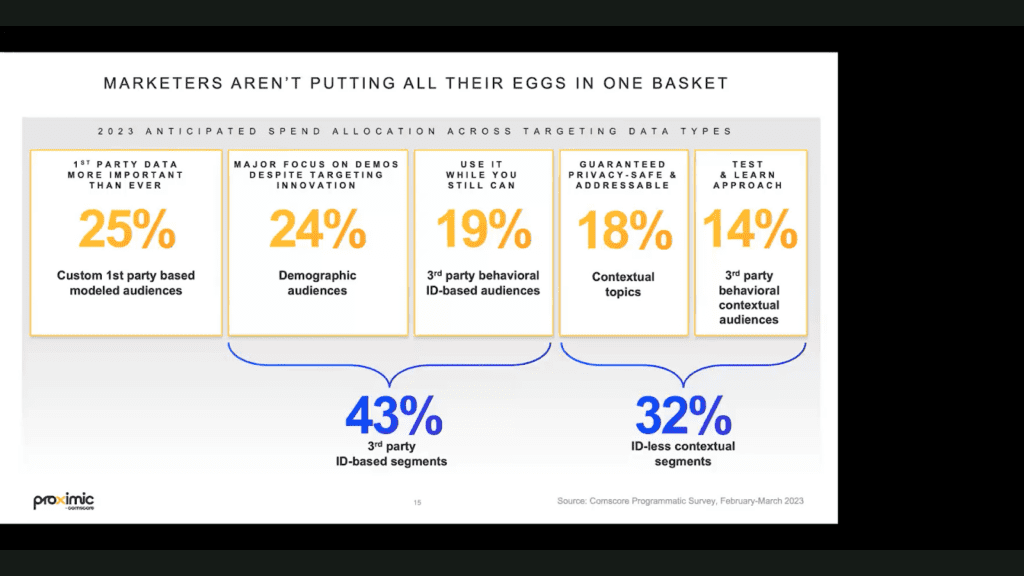
Image credit- AdMonsters
Read More: Relief To Advertisers As Google Postpones The Elimination Of Third-Party Cookies Till 2023.
Challenges facing post-third-party cookies arena
However, advertisers still experience difficulties. Lack of consistency is the biggest challenge brands face in managing media networks. They claimed there was annoyance with the quantity, caliber, and uniformity of data and reporting offered by each channel. This increased the brand teams’ efforts and made cross-platform comparisons challenging. The “walled-garden environment” that companies encounter when operating within the ecosystem presented advertisers with their second issue. They remain in the dark regarding their activations, which makes it difficult to maximize their deployment and return on investment. 44% of advertisers reported this problem.
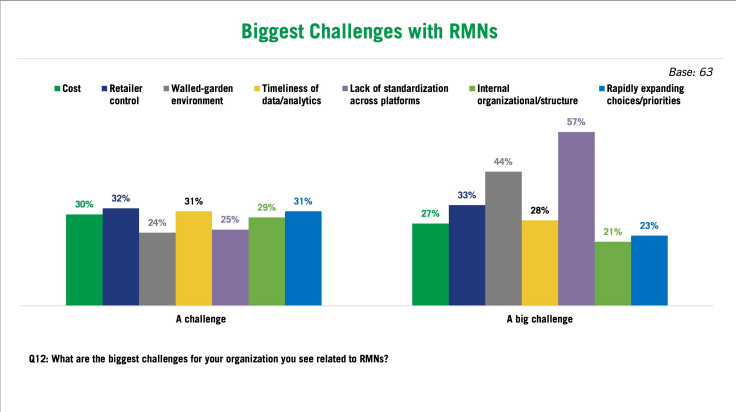
Image credit- ANA
Advertisers continue looking for alternatives to third-party tracking cookies, as cookies completely phase out starting in 2024. They are also investigating more contextual and interest-based targeting models. They include those based on images, audio, location, content sentiment, time, and weather. Additionally, they are working more closely with publishers, platforms, and tech suppliers to take advantage of shared data and insights as they push further to gather first- and second-party data to learn more about their customers. They have, however, also made several cautions about the expansion of programmatic channels.
The demise of third-party cookies marks a critical turning point for the industry. Advertisers are reacting to the novel situation. They now need to adopt cutting-edge tactics and technology to respect consumer tastes and confidentiality while retaining useful functionality. This will turn out to be the real test for them to tap into their creative side!
Read More: Google’s Phasing Out of Third-Party Cookies: A Paradigm Shift in Digital Advertising

